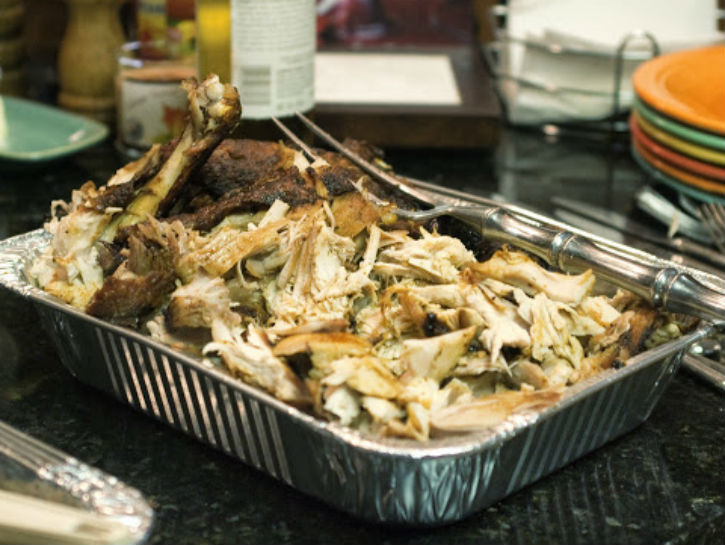If you eat out a lot or cook big family meals, leftovers are probably common in your everyday life. And, as the holiday season kicks into high gear, the chances of leftovers being in your refrigerator are even more likely. One of best parts about the day after Thanksgiving are the delicious leftovers, but the last thing you want is an upset tummy (or worse) because you didn’t handle the food properly.
So, to make sure that you can enjoy your leftovers without the threat of getting sick, here is a guide to handling food properly after you cook it.
Time Is Important

Once you have cooked and served your food, you have about two hours at room temperature before it becomes less safe to eat, according to Deirdre Schlunegger, CEO of Stop Foodborne Illness. After the two hours, bacteria can start to grow. So, for a regular meal, that means you want to get your food into containers and in the fridge as soon as dinner is over. And on big days like Thanksgiving, consider keeping your food on hot plates, chafing dishes, or in slow cookers so it stays at a safe temperature for longer.
You need to keep your food at 140 degrees Fahrenheit or warmer to prevent bacteria from growing. If you haven’t put your food in the fridge within two hours of cooking it (and didn’t keep it hot), you need to throw it out.
For cold, perishable dishes, you need to keep those at 40 degrees or colder. Nest your dishes into bowls of ice to keep them cold. If you end up with cold dishes that have been at room temperature for more than two hours, toss them.
Refrigerator Storage

Be sure to seal your leftovers in airtight storage containers to keep out the bacteria and retain moisture. For large items, divide those up into smaller containers so the food will cool quickly. You also want to label and date your leftovers, so you know how long they have been in your fridge.
Items That Keep 1-2 Days In Refrigerator include:
- Gravy and meat broth
- Fresh ground meats and stew meats
- Fresh poultry, fish, and seafood

Foods that will last up to four days are:
- Cooked meat and meat casseroles
- Cooked fish and shellfish
- Fully cooked ham slices
- Pizza
Most food items will last three to four days in the fridge, but after that the risk of food poisoning increases. So, if you don’t think you can eat all of your leftovers in that time frame, freeze them immediately, then thaw them out when you are ready to eat.
Food poisoning, or foodborne illness, comes from food contaminated with bacteria. But, because it doesn’t change a food’s smell, look, or taste, it can be hard to know if your food is dangerous to eat. Definitely throw it out after four days, but if you are in doubt before the four-day mark, go ahead and toss the leftovers.
Preparing Leftovers

Zapping your food in the microwave for thirty seconds isn’t going to cut it. When reheating food, you need to get the internal temperature to at least 165 degrees, and you can do that in the oven or microwave, or on the stovetop.
Always bring liquids like sauce or gravy to a rolling boil and use a food thermometer to measure the internal temp of solid foods. Not only does this help you make sure your food is safe to eat, but it will also help prevent you from over-reheating and drying your food out.
You also want to cover your leftovers while you are reheating them to keep in the moisture and to make sure the food heats all the way through.

If you are reheating your leftovers in the microwave, use a microwave safe dish and cover and rotate it so you can heat the food evenly. You might also need to add a little bit of liquid. Also, use a microwave safe cover and vent it to let steam escape. That will destroy bacteria and result in uniform cooking.
If you are reheating leftovers from the freezer, first thaw them in the fridge, microwave, or with cold water. After thawing, your food will last no more than four days in the fridge. Using cold water to thaw your food is faster than putting it in the fridge, but you need to use a plastic bag or other leak-proof packaging.
If you choose to thaw your food in the microwave, use a food thermometer to make sure the temp hits 165 degrees. This makes it safe to eat, plus it makes it safe to refreeze any leftover leftovers.
No matter if it is a holiday or a regular meal, don’t let your food go to waste! With these leftover tips, you can be confident that your food is safe to eat.
